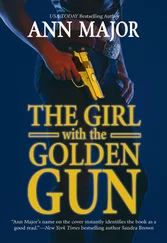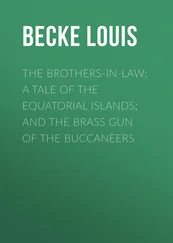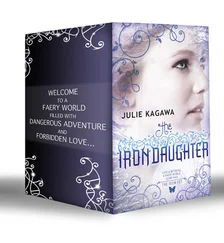“After that,” Williams testified, “Nicholas started talking, so I thought I’d let him do most of the talking to the gun salesman.”
Nicholas and the clerk, Tony Massengill, a firefighter and former policeman moonlighting as a gun salesman, talked about different types of guns, about muzzle velocities, how powerful one gun was as compared to another.
Williams and Nicholas next looked at a .45-caliber handgun. The clerk, according to Williams’s testimony, pulled the .45 from the counter display and handed it directly to Nicholas. They chatted a bit about the gun. Williams said they discussed “probably how many rounds it shoot and probably how hot it get, you know, after shooting so many rounds, and that kind of stuff.”
This gun didn’t interest Nicholas either, however. “He asked the gun salesman to show him the very next gun, which was a .357 Magnum,” Williams testified.
Once again the clerk, Massengill, handed the weapon to Nicholas, according to Williams: “The gun dealer took it out from under the counter… and handed it to Nicholas, and Nicholas started to inspect that gun.”
This was all, no doubt, great fun for Nicholas, whose passion for his birds was rivaled only by his love of guns. But he knew which gun he wanted.
Williams’s defense attorney, William Taliaferro, Jr., asked whether Nicholas and Massengill talked about the .357 Magnum.
“Yes,” Williams said, “how much more powerful that was versus the .45-caliber. Then after that, [Nicholas] went to the gun that we actually purchased, and he asked the gun salesman… he asked him, would he pull that out.”
The gun Nicholas wanted to see was the Cobray, lying dark and deadly in the cabinet. Again the clerk obliged, pulling out the gun and giving it to Nicholas to inspect.
Nicholas liked it, Williams recalled. “He said he’d read a lot about it. He had books on it and everything.”
Indeed, Nicholas began peppering the clerk with questions about the gun. What was the price? What was the muzzle velocity? How many rounds did the magazine hold? “They got in such a lengthy conversation about that,” Williams recalled, “I just kind of moved away from them a little bit, looking around on my own.”
When Williams returned, Nicholas and the clerk were still discussing the weapon. “I really don’t remember the exact words, but it was, you know, about the nomenclature of the gun, how many rounds it shoot, because it’s got a long clip on it, and I remember Nicholas saying we won’t have to load this so often when we’re in the gun range, and I said, ‘Yeah.’ I remember saying, ‘Yeah, that’s right, right.’”
The pair didn’t buy the Cobray at that point. Nicholas wanted to see more guns. The clerk put the gun back in the case.
Nicholas and Williams moved to the far side of a central display counter and examined more guns there. “I don’t see anything in here that I really want,” Nicholas told Williams. “I’m more interested in the other gun over there.”
The Cobray.
By now, of course, it had become apparent to Williams that this browsing trip had turned into something more. The fact it had become a serious shopping trip, however, did not faze Williams. He knew a lot of people who had bought guns for “juveniles,” he testified. “So I didn’t see anything wrong with it and I didn’t know [of any] law against buying a gun for a juvenile.”
Nicholas reached into his pocket and pulled out a roll containing $300, then passed the money to Williams, so Williams could pay for the gun.
When I visited Guns Unlimited in 1992, it was a small store with a showroom area about as large as a medium-size living room. The store was larger at the time Nicholas and Williams bought the Cobray and configured a bit differently, but still so small it seemed unlikely that Nicholas could have handed Williams the money without Tony Massengill being aware of the exchange.
What Massengill did see became a matter of debate—a debate that Massengill, himself, did little to resolve. He claimed he did not remember the transaction at all, although curiously a co-employee, present in the store at the time of the sale, testified later that he remembered seeing the buyers in the store even though he had not played a role in the sale. This clerk, Christopher Hartwig, also testified that he and Massengill had discussed the purchase after learning of the Atlantic Shores shootings.
Williams testified that when the money changed hands, Massengill was still behind the counter at the place where he had last talked with Nicholas, some eight or nine feet away. “He was still standing there, waiting to wait on us, looking at us.”
Asked if anything blocked the clerk’s view of the transfer, Williams replied no, only the center display table, on which the store had placed a stuffed bobcat. “But that wasn’t obstructing any view. If the gun dealer was looking, he could clearly see Nicholas hand me the money.”
(Raymond Rowley, an ATF special agent assigned to the agency’s Norfolk office, testified that Williams had told him a somewhat different story during a late-night interrogation at Williams’s home following the shootings. Williams had told Rowley that when Nicholas handed over the money, both he and Nicholas had their backs to the glass counter so that, as Rowley put it, “the salesclerk could not see that in fact the money… had come from Nicholas.”)
Nicholas and Williams returned to the counter that contained the Cobray pistol and told Massengill they wanted to buy it.
Massengill passed Williams a copy of federal form 4473.
Everyone who buys a gun from a federally licensed firearms dealer must fill out this two-page form, which among other things asks the would-be purchaser if he is a drug addict, a convicted felon, mentally ill, or an illegal alien; if he has renounced his U.S. citizenship; and whether he has been dishonorably discharged from the armed forces. The form goes nowhere. It is kept in the dealer’s files (provided the dealer in fact keeps such files and keeps them accurately) for later reference should the gun be used in a crime and subsequently traced by ATF. By federal law, the buyer need present only enough identification to prove that he is twenty-one or older and resides in the state in which the dealer is located. (State and local laws may add requirements.)
Williams testified that as he began filling out the form, Massengill told him, “The only thing that will keep you from buying this gun here in this store is you put a yes answer to these questions. Everything should be marked no. If you put a yes up there, that will stop you from getting the gun.”
Nicholas, meanwhile, had taken the gun from the counter and begun inspecting it. He looked at Massengill. “Doesn’t a clip come with this?”
Massengill found the clip and gave it to Nicholas. Nicholas walked out with the gun.
Taliaferro, Williams’s attorney, asked, “Did the salesman ever say anything to you that it was against the law to purchase that gun for Nicholas?”
“No, he didn’t,” Williams said. “Only thing he was interested in was making that sale.”
Massengill, in a deposition during the later civil trial against Guns Unlimited, testified, “I would never sell a gun to an adult that I understood was going to give that gun to a minor.” In an interview late in 1992, he told me, “It would be suicide to do business like that. On a gun like that there’s a profit margin of forty or fifty dollars. Is it worth taking a chance of losing your license to make fifty dollars?”
Once outside the store, Nicholas asked Williams to buy him some bullets. Williams refused. “I told him I wouldn’t buy any bullets because we didn’t need any bullets. I was going back home… to strip my floors, and we didn’t need no bullets until we got actually to the shooting range, and we could buy bullets in the shooting range.”
Читать дальше
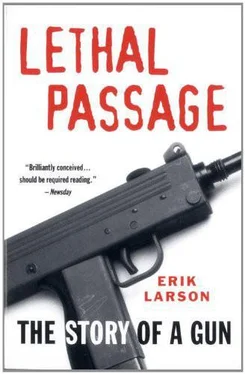
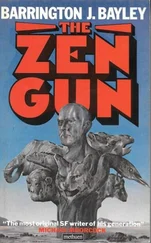
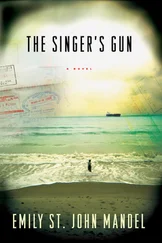

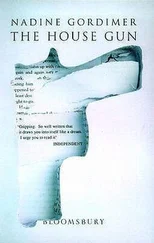

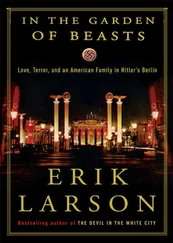

![Ричард Деминг - Whistle Past the Graveyard [= Give the Girl a Gun]](/books/412176/richard-deming-whistle-past-the-graveyard-give-t-thumb.webp)
